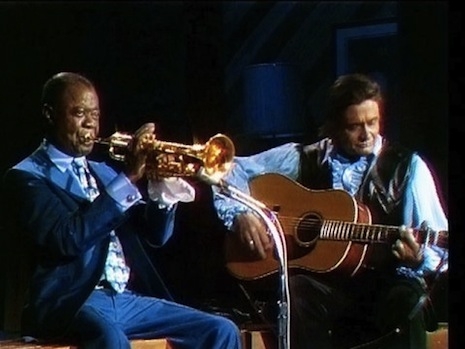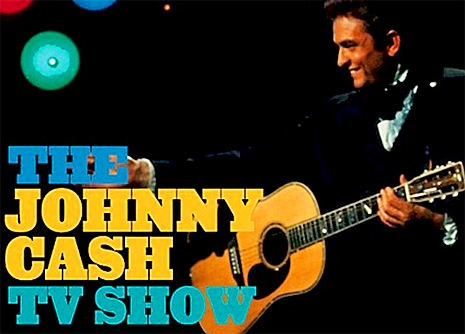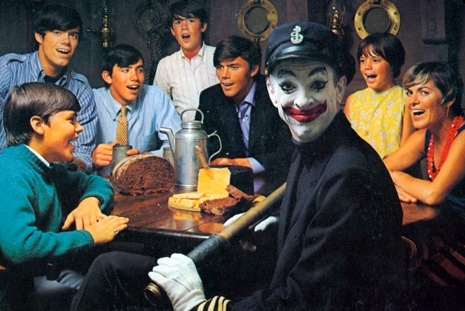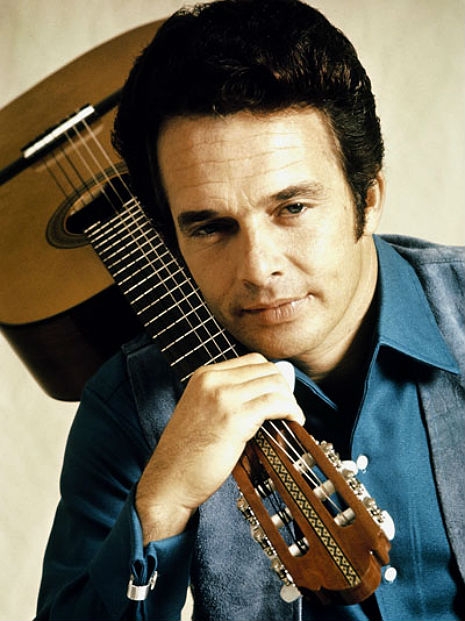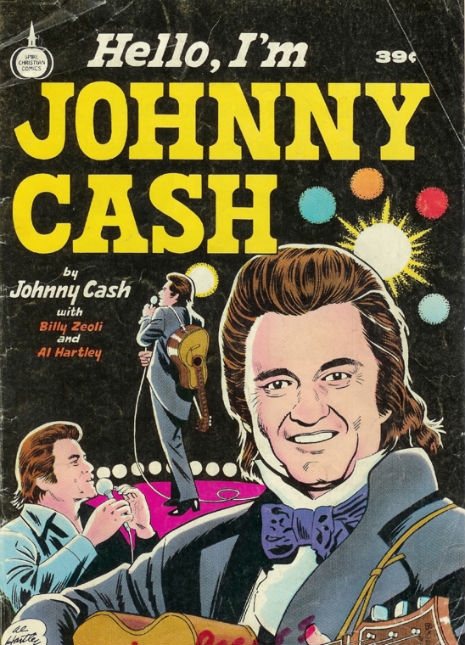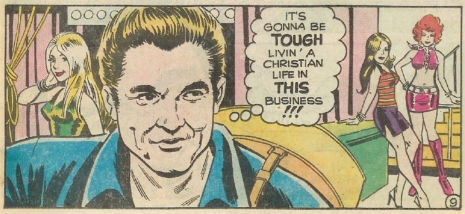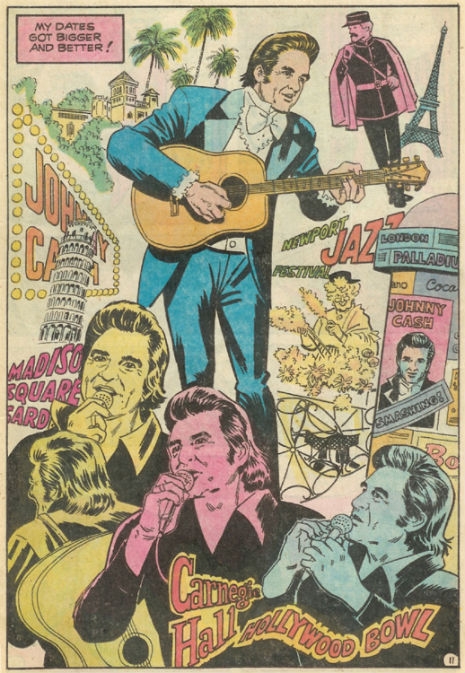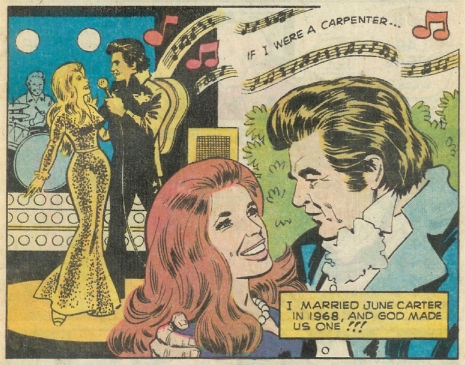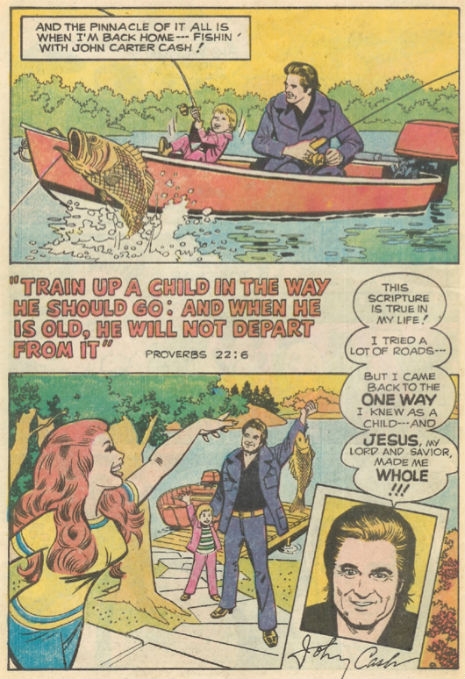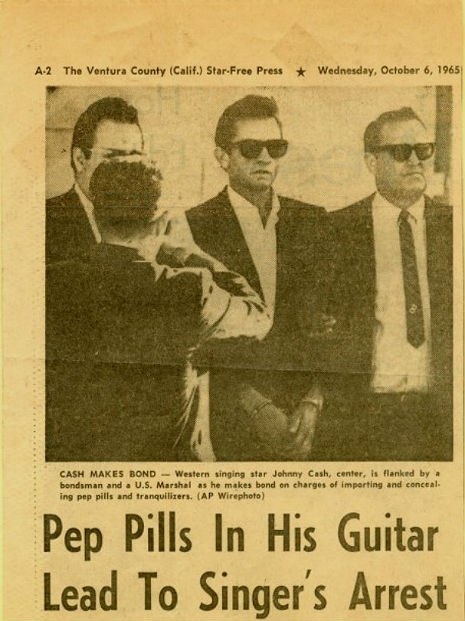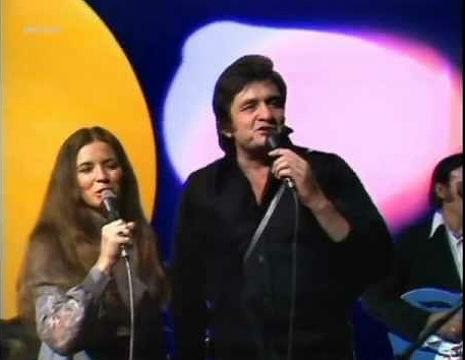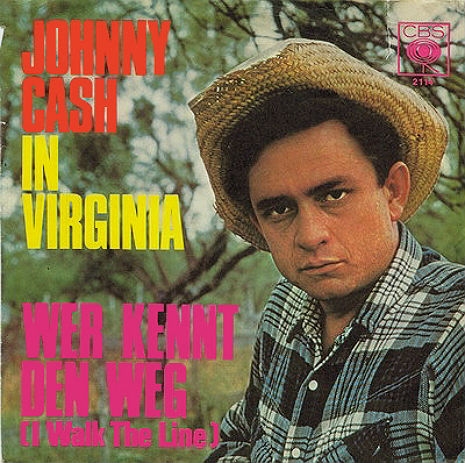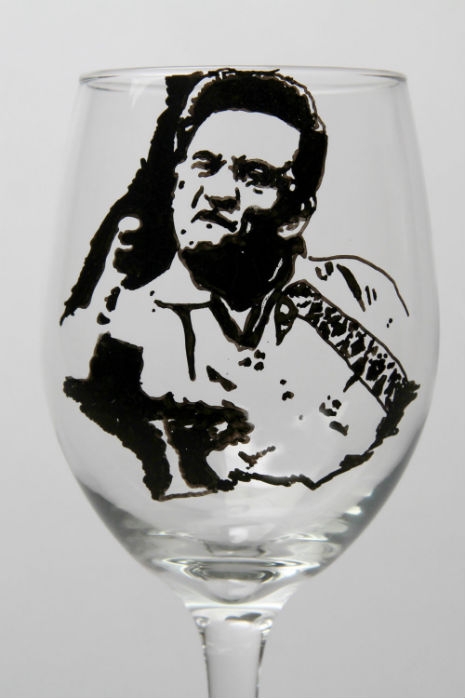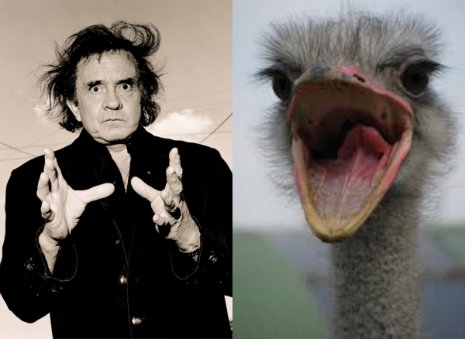
It’s well known that Johnny Cash battled drug addiction for much of his life. After having dabbled very seriously with pills in the 1960s, he managed to kick the habit until an eye operation and a near-fatal encounter with one of his pet ostriches provided ample grounds to turn to painkillers again. He was in pain, and painkillers alleviated that pain. The problem is, he kept using the painkillers even after the medical pretext for using them had long gone away.
The year is 1981, a relative lull in Cash’s career. Cash’s masterpieces of the 1960s were long behind him, and he had spent most of the 1970s in a manner that was a far cry from his outlaw image, recording a great deal of gospel, cultivating an avuncular, family-friendly image for his annual Christmas television specials, and even appearing on an episode during the third season of Columbo. Actually, let’s give you a taste of that Columbo episode just for fun:
Cash was a long way from the hefty second wind his career would get after his album American Recordings, produced by Rick Rubin, introduced him to a younger audience more conversant with REM than with George Jones.
According to Cash, if it weren’t for the “good and strong” belt he was wearing, the ostrich would easily have killed him. The incident took place at the “House of Cash” in Hendersonville, Tennessee, which featured offices, a museum, a recording studio, a gift shop—and an enclosure for exotic animals, including ostriches. Cash’s return to heavy amphetamine use lasted until a 1983 incident in which Cash trashed a hotel room in Nottingham, U.K., landed him in the hospital.
Here’s Cash’s engaging account of the ostrich attack, as related in Cash: The Autobiography:
One such spell, the most serious and protracted, began when I took painkillers after eye surgery in 1981, then kept taking them after I didn’t need to. It escalated after I was almost killed by an ostrich.
Ostrich attacks are rare in Tennessee, it’s true, but this one really happened, on the grounds of the exotic animal park I’d established behind the House of Cash offices near my house on Old Hickory Lake. It occurred during a particularly bitter winter, when below-zero temperatures had reduced our ostrich population by half; the hen of our pair wouldn’t let herself be captured and taken inside the barn, so she froze to death. That, I guess, is what made her mate cranky. Before then he’d been perfectly pleasant with me, as had all the other birds and animals, when I walked through the compound.
That day, though, he was not happy to see me. I was walking through the woods in the compound when suddenly he jumped out onto the trail in front of me and crouched there with his wings spread out, hissing nastily.
Nothing came of that encounter. I just stood there until he laid his wings back, quit hissing, and moved off. Then I walked on. As I walked I plotted. He’d be waiting for me when I came back by there, ready to give me the same treatment, and I couldn’t have that. I was the boss. It was my land.
The ostrich didn’t care. When I came back I was carrying a good stout six-foot stick, and I was prepared to use it. And sure enough, there he was on the trail in front of me, doing his thing. When he started moving toward me I went on the offensive, taking a good hard swipe at him.
I missed. He wasn’t there. He was in the air, and a split second later he was on his way down again, with that big toe of his, larger than my size-thirteen shoe, extended toward my stomach. He made contact—I’m sure there was never any question he wouldn’t—and frankly, I got off lightly. All he did was break my two lower ribs and rip my stomach open down to my belt, If the belt hadn’t been good and strong, with a solid belt buckle, he’d have spilled my guts exactly the way he meant to. As it was, he knocked me over onto my back and I broke three more ribs on a rock—but I had sense enough to keep swinging the stick, so he didn’t get to finish me. I scored a good hit on one of his legs, and he ran off.
They cleaned my wounds, stitched me up, and sent me home, but I was nowhere near good as new. Those five broken ribs hurt. That’s what painkillers are for, though, so I felt perfectly justified in taking lots of them. Justification ceased to be relevant after that; once the pain subsided completely I knew I was taking them because I liked the way they made me feel. And while that troubled my conscience, it didn’t trouble it enough to keep me from going down that old addictive road again. Soon I was going around to different doctors to keep those pills coming in the kind of quantities I needed, and when they started upsetting my digestive system, I started drinking wine to settle my stomach, which worked reasonably well. The wine also took the sharper, more uncomfortable edges off the amphetamines I’d begun adding to the mix because—well, because I was still looking for that euphoria.
So there I was, up and running, strung out, slowed down, sped up, turned around, hung on the hook, having a ball, living in hell……
I couldn’t resist this one: here’s “Folsom Prison Blues” performed by Ostriches—no, not “perfomed by ostriches,” performed by some band named Ostriches.
Previously on Dangerous Minds:
Johnny Cash: White pills, red pills, everybody’s a nut
Just a photo of a ravenous Johnny Cash eating cake
Posted by Martin Schneider
|
10.04.2013
10:16 am
|
